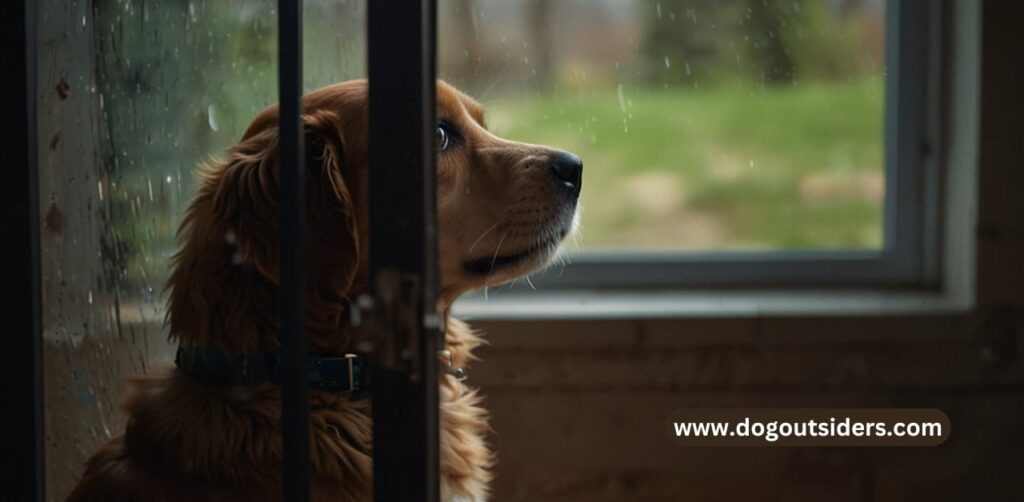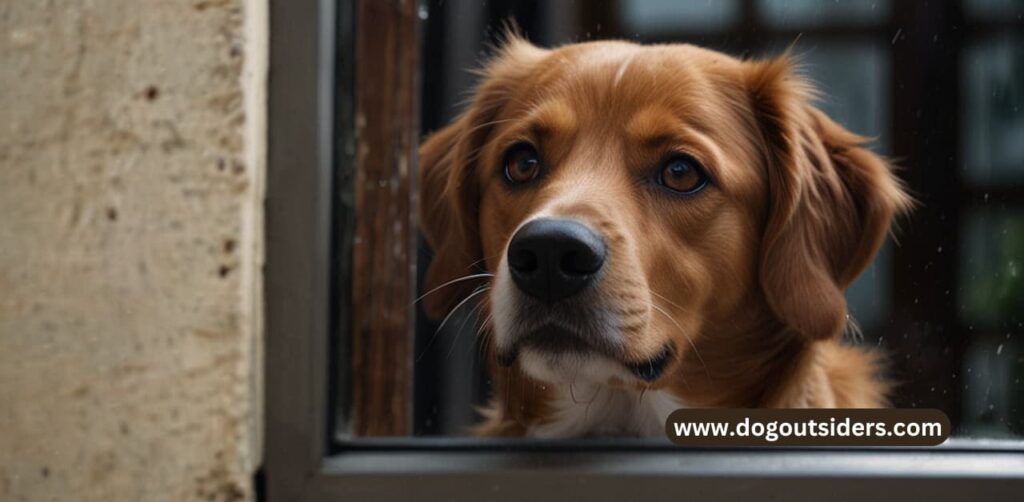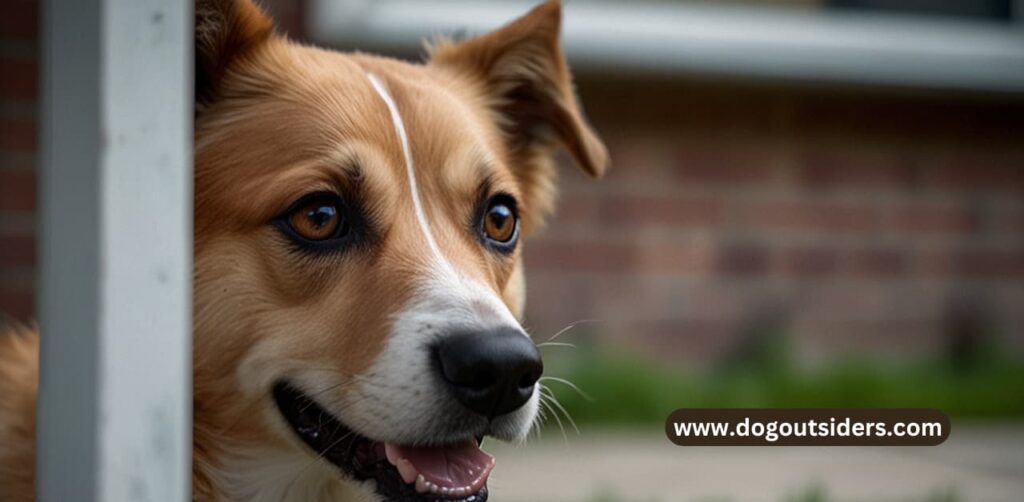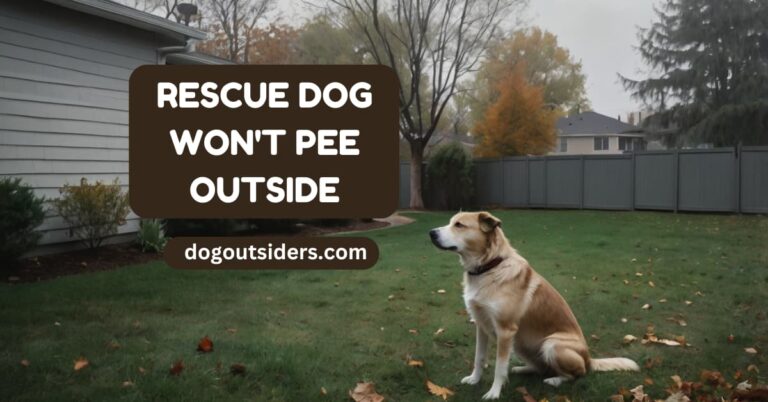Is your furry friend suddenly hesitant or fearful about going outside? It can be concerning when your dog displays this behavior out of the blue. There are several reasons why your dog may be afraid to go outside, ranging from past traumatic experiences to sensory sensitivities. Understanding the root cause of your dog’s fear is crucial in helping them overcome it and enjoy their outdoor adventures once again. Let’s explore some possible explanations for why is my dog suddenly afraid to go outside?
Key Takeaways
- Understanding Dog Fear: Recognize the signs of fear in your dog, such as trembling or avoiding certain places, to address the issue effectively.
- Common Fear Triggers: Identify common triggers like loud noises or unfamiliar environments that may be causing fear in your dog.
- Health and Injury Concerns: Regularly check for any physical issues like injuries or pain that could be contributing to your dog’s fear of going outside.
- Anxiety and Trauma Effects: Be mindful that past traumatic experiences or separation anxiety may be affecting your dog’s behavior outdoors, try to need around.
- Helping Your Dog Cope: Provide comfort and support to help your dog feel safe, secure, and gradually overcome their fear of going outside.
- Positive Reinforcement Strategies: Use treats, praise, and rewards to reinforce positive behavior when your dog shows bravery or progress in facing their fears.
Understanding Dog Fear

Signs of Fear
When outside, try to pay attention to your dog’s body language, looking around for signs of fear like trembling or cowering. Recognize that fear can manifest differently in dogs, such as avoiding eye contact or seeking comfort.
I always observe my dog closely when we are outside, noticing any subtle changes in behavior that indicate fear. For example, my dog starts panting heavily and tries to hide behind me when encountering loud noises.
Fear vs. Disobedience
Distinguish between fear and disobedience by understanding the root cause of your dog’s reluctance to go outside. Fear may stem from past traumatic experiences or unfamiliar stimuli in the environment.
My personal experience taught me that addressing my dog’s fears with patience and positive reinforcement helped build trust and confidence over time. By gradually exposing my dog to outdoor settings and rewarding calm behavior, I could help alleviate his fears.
Impact on Behavior
Understand how fear can influence a dog’s behavior, leading to avoidance or aggression in certain situations. Dogs may exhibit destructive behaviors or excessive barking when feeling anxious or fearful.
I learned that creating a safe and predictable routine for my dog helped reduce his anxiety about going outside. By establishing a consistent schedule for walks and providing familiar toys or treats, I could make the outdoor environment more comfortable for him.
Common Fear Triggers
New Sounds
Dogs can get startled by sudden loud noises like thunder, fireworks, or construction work. These sounds may trigger fear responses, making your dog hesitant to go outside.
Unfamiliar Objects
Strange objects in the environment such as garbage cans, bicycles, or even garden decorations can spook your dog. They might perceive these items as potential threats.
Unpredictable Movements
Animals or people moving erratically can be intimidating for dogs. Sudden movements may trigger a fear response, causing reluctance to venture outdoors.
Past Traumatic Experiences
Negative encounters in the past such as aggressive interactions with other animals or getting lost outside can instill fear in dogs. These experiences linger and affect their behavior.
I have found that introducing positive reinforcement techniques while addressing these triggers can help desensitize dogs to their fears gradually. It’s essential to create a safe and calm environment for them to build confidence in facing their fears.
Health and Injury Concerns

Signs of Pain
Monitor your dog for signs of pain such as limping, whining, or reluctance to move. These could indicate underlying health issues.
Veterinary Consultation
Consult a veterinarian to rule out medical conditions that may be causing your dog’s sudden fear of going outside. They can conduct tests to identify any health concerns.
I’ve personally experienced how crucial it is to seek professional advice when my dog started exhibiting unusual behavior. It turned out he had a hidden injury causing him discomfort.
Physical Limitations
Address any physical limitations your dog may have that could be hindering their outdoor activities. This includes joint problems, arthritis, or recent injuries.
When my dog was afraid to go outside, I discovered he had developed arthritis, which made it painful for him to move around freely. Making adjustments to his exercise routine helped alleviate his discomfort.
Anxiety and Trauma Effects
Separation Anxiety
Recognize symptoms of separation anxiety in your dog, such as excessive barking, destructive behavior, or house soiling. Pacing or attempting to escape are also signs of distress when left alone. Providing interactive toys or leaving a piece of clothing with your scent can help alleviate anxiety.
Past Traumatic Experiences
When understanding how past traumatic experiences influence behavior, consider any history of abuse, neglect, or frightening encounters. Dogs may exhibit fear or aggression due to unresolved trauma, requiring patience and positive reinforcement to rebuild trust. Creating a predictable routine can offer comfort and stability.
Safe Environment
To help your dog cope with anxiety, provide a safe and secure environment by establishing a designated space for relaxation. Use calming techniques like gentle massage or soothing music to promote relaxation. Gradual desensitization to triggers can aid in reducing fear responses.
Noise and Weather Sensitivity
Loud Noises
Loud sounds such as thunderstorms, fireworks, or construction work can trigger fear in dogs. These sudden noises may startle them, leading to anxiety about going outside.
I always make sure to comfort my dog during loud noises by staying close and offering reassurance. Creating a safe space indoors with familiar items can help alleviate their anxiety.
Extreme Weather
Weather conditions like heavy rain, strong winds, or extreme temperatures can also make dogs afraid to go outside. The discomfort caused by these conditions can lead to reluctance in venturing outdoors.
When it’s raining heavily, I use a raincoat or an umbrella for my dog to keep them dry and comfortable. Providing a sheltered area in the yard can offer a sense of security during extreme weather.
Helping Your Dog Cope
Gradual Exposure
Implement gradual exposure techniques to help your dog overcome fear of going outside. Start by taking short walks near your home, gradually increasing the distance as your dog becomes more comfortable. Try to identify triggers that cause fear and work on desensitizing your dog to them.
Comfort and Reassurance
Provide comfort and reassurance during outdoor experiences to help your dog feel safe. Use a calm and soothing voice, petting, or treats to show your dog that there is nothing to be afraid of outside. Tips such as bringing along their favorite toy or blanket can also provide a sense of security.
Positive Reinforcement
Use positive reinforcement to build confidence in your dog when they do go outside. Reward brave behavior with treats or praise to reinforce positive associations with outdoor activities. Consistency is key in helping your dog overcome their fears and anxieties.
Positive Reinforcement Strategies

Use Treats
Using treats is an effective way to encourage your dog to overcome their fear of going outside. Offering treats when they show positive behavior reinforces the idea that being outdoors is rewarding.
By giving treats, you create a positive association with outdoor activities, making your dog more willing to venture outside. It’s important to use high-value treats that your dog loves to maximize the effectiveness of this strategy.
Establish Routine
Establishing a routine that involves rewards for outdoor activities can help desensitize your dog’s fear. Consistency is key in reinforcing positive behavior and building confidence in your pet.
Creating a predictable schedule for outdoor time provides a sense of security for your dog, helping them feel more comfortable stepping outside. Consistent positive experiences can gradually reduce their anxiety about going outdoors.
Celebrate Small Victories
Celebrating small victories plays a vital role in boosting your dog’s confidence and motivation to go outside. Acknowledging their progress with praise and rewards reinforces the desired behavior.
Recognizing even minor improvements, such as taking a few steps outside or staying out for a bit longer, can make a significant impact on your dog’s willingness to face their fears. Positive reinforcement techniques, coupled with patience and consistency, are key to helping your furry friend overcome their reluctance to go outside.
Gradual Exposure Techniques
Baby Steps
Introduce your dog to outdoor experiences in small, manageable steps to help them overcome their sudden fear. Begin by taking short walks near your home and gradually increase the distance as your dog becomes more comfortable.
Slowly desensitize your dog to the triggers causing fear by exposing them to those stimuli in a controlled manner. For instance, if loud noises scare your dog, start with playing recordings of such sounds at a low volume and gradually increase it over time.
I find that using positive reinforcement techniques during gradual exposure can be highly effective. Rewarding your dog with treats or praise when they exhibit calm behavior outdoors can help create a positive association with being outside.
Consistency is Key
Consistency in practicing these baby steps is crucial for helping your dog overcome their fear of going outside. Make sure to maintain a regular routine of short outdoor sessions to reinforce positive experiences.
In my experience, it’s essential to be patient and understanding throughout this process. Each dog responds differently to gradual exposure techniques, so it’s important to tailor the approach based on your pet’s reactions and progress.
Remember that progress may be slow, but with consistent effort and positive reinforcement, most dogs can learn to feel comfortable outdoors again.
Enjoying the Outdoors Together
Fun Activities
Engage in fun outdoor activities with your dog to help them overcome their fear of going outside. Play fetch, go for a walk, or simply explore new areas together.
Taking your dog on regular walks can help them become more comfortable with being outside. Gradually increase the duration and distance of your walks to build their confidence.
Building Trust
Build trust and bond with your dog by being patient and supportive during outdoor adventures. Use positive reinforcement techniques such as treats and praise to encourage good behavior.
Creating a safe and secure environment for your dog is essential. Ensure that they have a comfortable leash and harness, especially if they are anxious about being around other people or animals.
Rewarding Experience
Make outdoor time a rewarding and enjoyable experience for both you and your furry friend. Incorporate playtime, training sessions, or simply relaxing together in a peaceful outdoor setting.
Spending quality time outdoors can strengthen the bond between you and your dog. By sharing these positive experiences, you can help them overcome any fears they may have developed in the past.
I find that establishing a routine for outdoor activities can be beneficial for dogs who are hesitant to go outside. By sticking to a consistent schedule, my dog has grown more confident and relaxed during our outdoor adventures.
Conclusion:
Understanding why your dog is suddenly afraid to go outside is the first step in helping them overcome their fears. By recognizing common triggers, addressing health concerns, and implementing positive reinforcement techniques, you can gradually build your dog’s confidence and enjoyment of outdoor activities. Remember, patience and consistency are key when supporting your furry friend through their anxieties.
Take the time to observe and understand your dog’s behavior, tailor your approach to their specific needs, and celebrate small victories along the way. With dedication and love, you can create a safe and comfortable environment that allows your dog to thrive outdoors once again.
FAQ’s:
If your dog is suddenly afraid to go outside, it could be due to various reasons such as a past traumatic experience, loud noises, health issues, or changes in the environment. Understanding the underlying cause will help you address your dog’s fear effectively.
Common fear triggers for dogs include loud noises like thunderstorms or fireworks, unfamiliar environments, being separated from their owners, past traumatic experiences, and even certain smells or objects that they associate with negative experiences.
Health issues such as pain from arthritis or injuries can make a dog reluctant to go outside due to discomfort. It’s essential to rule out any physical problems by consulting with a veterinarian if your dog shows signs of fear related to movement or outdoor activities.
Anxiety and trauma can have long-lasting effects on a dog’s behavior, leading to fear and avoidance of certain situations like going outside. Dogs may exhibit signs of stress such as panting, pacing, trembling, or avoidance behaviors.
Dogs with noise sensitivity or weather-related fears may become anxious or scared when exposed to loud sounds like thunderstorms or windy conditions. Their reluctance to go outside could be linked to their aversion to these sensory stimuli, requiring patience and understanding from pet owners.
Using positive reinforcement techniques such as treats, praise, and play rewards can help desensitize dogs to their fears gradually. By associating outdoor experiences with positive outcomes, dogs can learn to overcome their anxieties and build confidence in facing their fears.
Gradual exposure involves slowly introducing your dog to outdoor environments while monitoring their reactions and providing support as needed.






